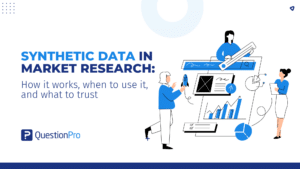
I was fortunate enough to have a restful Thanksgiving Week. I took a few days off and had the opportunity to visit with two of my kids who did not have time to travel. I also caught up on a few emails that I had missed during a very busy time of the year.
One thing that has kept me quite busy is working with industry analysts as they work to fill in their reports on our industry in the latter part of the year. In fact, there is still some work left with one of them, but the bulk of the work is completed.
Check Out This Week’s Video Summary:
There have been some mixed results to date. We had a review by one industry analyst that was outstanding – putting us at the top of their review in two of our key Customer Experience categories – Voice of the Customer software and Customer Journey Mapping software. In another, we barely missed the ever-increasing revenue threshold that was to be included in the report. In the third, we await the publication early in the next year, but we tend to see ourselves in the middle of the pack when it comes to this last one.
It is not lost on me that there are big gaps between the three different reports. Admittedly, the places where we get “left behind” in the last two reports are really because we take a different approach to managing the customer experience – basing it around Understanding Journeys and Taking Action. In the one report where we were left off the list of analyzed companies, we see a trend where they only want to review the “big players” in the industry.
While we probably have almost as many clients as these companies, because we have delivered exceptionally in smaller markets – where relative revenues are lower – we are “punished” because we believe that customer experience should be an initiative in all companies in all markets, not just the ones that can pay high amounts for the privilege of using our software.
In the most recent response for an analyst request for information, I was taken aback by how structured the requirements were outlined. In fact, as I read through the requirements, all the tools for which we would be measured against seemed to be the exact tools that are offered by a single company – one of our competitors that consistently sits atop of that list. Do not get me wrong; I am not begrudging their performance. The part that I question is how this structured list allows any individual firm to show its innovation. How do we demonstrate what is “next” when our demonstration is limited to the already established capabilities of a specific company that wants to be “everything to everyone” instead of having an established methodology or committing to a philosophy?
We know that some companies will get more favorable views in these analyst reports because they pay a large amount of money to buy additional time with the analysts. That is one-half of the revenue model for these analysts. However, the other half represents companies that are trying to understand who is innovative and bringing an approach that matches that company’s needs—a matchmaker between companies and technology firms.
This is not a condemnation of the potential conflict of interest in being paid on both sides of this equation. However, I feel there is a missed opportunity for these companies to bring the best and the newest technology innovations to their clients who are looking to make purchases in favor of those companies looking to make a sale. In fact, with the way many of these industry analysts structure their input process – the same year after year – the requirements for each of their “key capabilities” are easily met by most companies in this space, but the ability to hear about innovation is limited to a fifteen-minute question and answer session and a comparison to a competitor that invests very little into innovation – except maybe to purchase another firm to acquire that capability.
While we must play in their ‘game’, what I prefer to do is take a look at our core philosophy and talk about the innovations there. For me, we have seen many innovations in the acquisition of data – so much so that the term “data lake” is sometimes referred to as a “data swamp” – a lot of data that no one can use. A former colleague once referred to data as manure, if you know how to distribute it correctly, you can grow your organization. If you do not know what to do with it, then it just becomes a stinking pile.
What do I see in the future? Let’s focus on action. So many of the AI tools right now are still focused on how we can turn unstructured data into structured data. Instead, I see Voice of the Customer programs focusing on AI providing actions that the frontline can take. From curating a custom response to delivering root cause action, we see innovation in our ability to make the insights truly actionable. We will still depend on data to provide insights, but when you take those insights into action is when the frontline and the customers really feel the difference in the experience. Stand out; that is what will make a difference.







